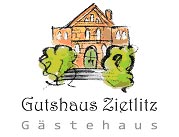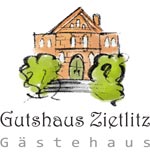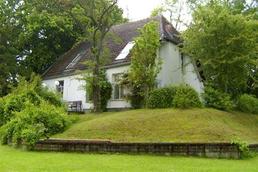Deutsche Website
A manor house for a whole group!

The guest house Zietlitz offers the suitable ambience for family celebrations, small seminars, groups of friends of historical manor houses; nature lovers, yoga groups and much more.
Manor House Finkenwerder
Finkenwerder, main office of Goldberg, later of Lübz, an island between Lake Goldberg, its former southern side arm, Lake Woost, and then the small and great Lake Medower, could only be reached through bridges, on a path that is now almost overgrown, until the lakes’ mirrors were lowered after 1845 and the Goldberg-Karow country road constructed between 1862 and 1869, from which a dirt road now leads to Finkenwerder.
The island is named after former landlords, the Fin(ec)ken, who also owned land in Woosten, to which parish Finkenwerder belonged. Claus Finken and his neighbor, Kurt Dessin, were two robber barons, whose malpractices led Wismar residents to complain to the Duke in 1391/92.
The manor house, which is located on a small hill, was originally a moated castle like the one in Woosten. No inhabitants survived the Thirty Years’ War. The owners included the von Linstow family, who also owned Diestelow where they moved to in 1704. Finkenwerder was only left with three inhabitants (six in 1751, 34 in 1869, 29 in 1889, 19 in 1892, 22 in 1906, 36 in 1923). In 1779, Finkenwerder was pledged. In 1786, it was owned by a person called Krieger and was pledged again in 1802. In 1810, the 394.13 bu. = 109.6 ha fief was owned by Peter Friedrich Daniel Duge. The sovereign prince had reserved the big game hunt for himself (this was permitted by national law, but one was only allowed to hunt deer). Around 1850, the property was acquired by Ernst Friedrich Christian Wilhelm Duge, the regional secretary, notary, and Actuarius in Goldberg, author of “documentary news about Goldberg and the surrounding area” (1883) and a factory for Goldberg water supply. Duge retired in 1877 and gave Finkenwerder to Johann Christian Friedrich Wilhelm Peters, the director of the knightly Goldberg police, who made it an allodial property (but the sovereign prince retained the big game hunt), bought more land, (in 1889, Finkenwerder had expanded to 446.13 bu. = 123 ha), and converted the manor house into a “hunting castle” through clever extensions in 1900:
a broad portal porch above the roof before the center of the western long side and a small entrance hall in front of the northern half, under a roof terrace, which leads to an open staircase. A new two-storey building that is equally high but at a different terrain was also constructed at a 145-degree angle to the old building on the northern vestibule and connected to the old building via a tower-like staircase.
In 1910, the Peters sold the property to Friedrich Franz von Bülow, who (in 1913) had 22 horses (as well as 50 cows, 100 pigs), a horse stable, and some type of four-part row house with its initials on the narrow side for the workers. In 1923, Bülow is still said to have been the owner, and then Erich Fischer in 1927 and 1930. After 1930, the estate was enlarged greatly following the purchase of Woosten and, therefore, became more economical.
After the land reform, the manor house was destroyed by a fire in 1947 and had to be demolished. Only its oldest part on the former castle hill remains. The external appearance has largely been maintained. It is well-kept and has been set up to accommodate holiday apartments.



